- https://www.ciil.org/
- https://www.efluniversity.ac.in/
- https://www.iict.res.in/DEPARTMENTS
- https://www.csir.res.in/csir-labs
- https://nimhans.ac.in/
- https://www.aiishmysore.in/
- https://www.riemysore.ac.in/
- https://www.indiannavy.nic.in/insshivaji/content/centre-marine-engineering-technology-cmet
- https://dbtindia.gov.in/about-us/organization-structure/autonomous-institution
- https://gamcmysore.karnataka.gov.in/english
Category: Uncategorized
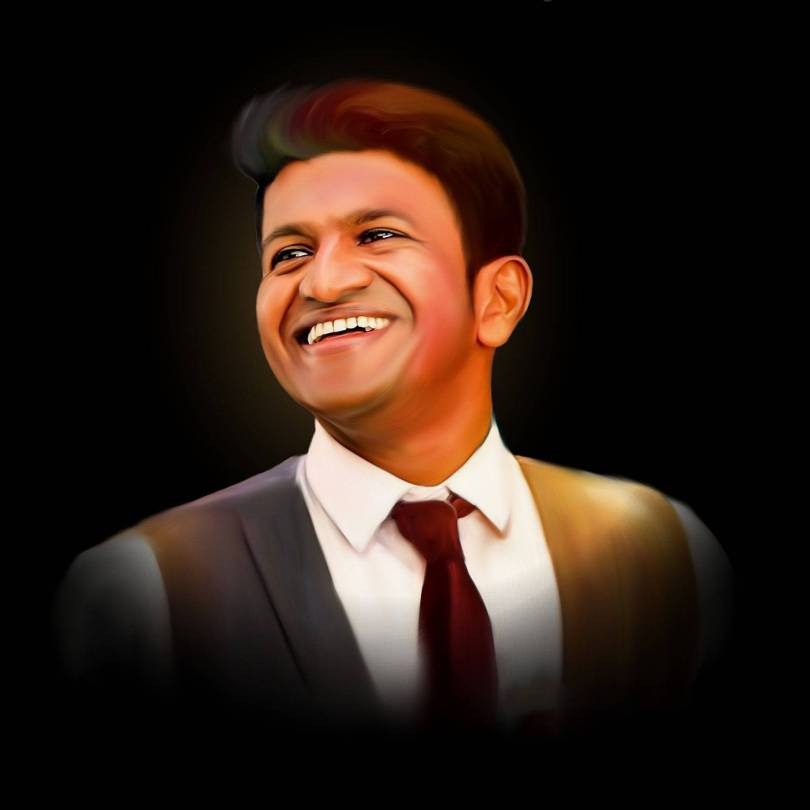
Puneet Rajkumar: The Evergreen Icon of Kannada Cinema
Puneet Rajkumar, often fondly referred to as “Power Star” by his fans, was a true luminary in the world of Indian cinema. Born on March 17, 1975, in Bangalore, Karnataka, he was destined to carry forward the illustrious legacy of his legendary father, Dr. Rajkumar, one of the most iconic figures in the Kannada film industry. Puneet’s journey from childhood to his prolific acting career, which spanned until his untimely passing in 2021, was nothing short of extraordinary.

Puneet Rajkumar’s cinematic journey began at a tender age. As a child artist, he made his debut in the Kannada film industry with the movie “Bhakta Prahlada” in 1986. His endearing portrayal of the young Prahlada showcased his innate talent and marked the beginning of what would be a magnificent career.
However, Puneet Rajkumar’s true ascent to stardom came when he transitioned to lead roles in the late 1990s. His debut as a lead actor in the film “Appu” (2002), directed by Puri Jagannadh, set the stage for a series of remarkable performances. The film was a blockbuster, and Puneet’s portrayal of a rebellious young man catapulted him into the limelight. His nickname, “Appu,” became synonymous with the youthful energy and charisma he brought to his roles.
Over the years, Puneet Rajkumar proved his versatility as an actor. He effortlessly slipped into various genres, from romantic dramas to action-packed thrillers. His acting prowess shone in movies such as “Milana,” where he played a compassionate teacher, and “Jackie,” which showcased his action-hero persona.
One of the defining features of Puneet Rajkumar’s career was his ability to connect with the audience on an emotional level. His performances were marked by authenticity and relatability, making him a beloved figure in Karnataka and beyond. His role in “Akash” touched hearts with its portrayal of a visually impaired young man, and “Raj – The Showman” captured the essence of a struggling actor’s journey.
Beyond his acting, Puneet Rajkumar was a multifaceted talent. He was a gifted playback singer and lent his voice to several soulful songs that became chart-toppers in the Kannada music scene. His dedication to perfecting his craft extended to every aspect of filmmaking.
Puneet Rajkumar’s enduring appeal stemmed not only from his cinematic achievements but also from his humility, grounded personality, and his connection with his fans. He remained a role model and inspiration to many, carrying forward the values instilled by his illustrious father.
Tragically, Puneet Rajkumar’s life was cut short when he passed away on October 29, 2021. His untimely demise left a void in the hearts of millions of fans and a profound sense of loss in the Kannada film industry.
In conclusion, Puneet Rajkumar’s journey from a child artist to becoming an iconic figure in Kannada cinema is a testament to his immense talent, dedication, and the profound impact he had on the industry. His legacy lives on through his timeless performances and the indelible mark he left on Indian cinema. Puneet Rajkumar will forever be remembered as the “Power Star” who illuminated the silver screen with his charisma and talent, leaving an enduring legacy for generations to come.
Gangadhar Pantawane – Marathi Writer
Gangadhar Vithoba Pantawane (28 June 1937 – 27 March 2018) was a prominent Indian Marathi writer, literary critic, and a committed follower of B. R. Ambedkar, the visionary behind the Indian Constitution. Hailing from Maharashtra, he played a pivotal role in championing the rights and literature of the Dalit community. His influence on the Dalit literary movement in Maharashtra was profound, and he was a trailblazer in this regard.

In 2008, Pantawane achieved the honor of being elected as the president of the inaugural Marathi Vishwa Sahitya Sammelan (World Marathi Literature Conference) held in the United States. His groundbreaking journal, “Asmitadarsh,” served as a source of inspiration for countless Dalit writers and intellectuals, providing a platform for their voices to be heard and their concerns addressed.
In recognition of his significant contributions to literature and social change, Gangadhar Vithoba Pantawane received the prestigious Padma Shri award from the Government of India in 2018, a fitting acknowledgment of his enduring legacy in the realms of literature and social reform.
Some of his notable books include:
- “Pratibimb”: This is one of Pantawane’s acclaimed novels, known for its exploration of human relationships and societal norms.
- “Kalokhachya Lagnala”: Another significant novel by Pantawane, it delves into various aspects of rural life and culture in Maharashtra.
- “Kumudini”: This is a collection of his short stories, celebrated for their simplicity and deep themes, often portraying rural life.
- “Asmitadarsh”: While not a traditional book, Pantawane’s journal “Asmitadarsh” played a crucial role in the Dalit literary movement, galvanizing generations of Dalit writers and thinkers.
- Various Essays: Pantawane also wrote numerous essays on topics such as literature, folklore, and social issues.
These are some of the notable works by Gangadhar Pantawane, and his literary contributions have left a lasting impact on Marathi literature and the Dalit literary movement in Maharashtra.
Mono and Bilingual Learners
Mono and bilingual learners refer to students who are either monolingual (speak only one language) or bilingual (speak two languages) in the context of ESL (English as a Second Language) education. Understanding whether a student is mono or bilingual is important because it can influence how they approach and experience the process of learning English.
Mono Learners: Mono learners are individuals who speak only one language fluently. For them, learning English is often a journey of starting from scratch. Their primary language may not have much in common with English in terms of vocabulary, grammar, or phonetics. This can present both challenges and advantages:
Challenges:
- Limited Linguistic Connections: Mono learners may have fewer linguistic similarities between their native language and English, making it harder to draw on existing language skills.
- Pronunciation Struggles: English sounds that do not exist in their native language can pose challenges for accurate pronunciation.
- Conceptual Adjustments: Understanding grammatical structures and idiomatic expressions unique to English may require more effort.
Advantages:
- Fresh Perspective: Mono learners might approach English with an open mind and fewer preconceived notions about how a language should work.
- Focused Learning: Since they don’t have to balance the nuances of multiple languages, mono learners can focus more intently on mastering English.
Bilingual Learners: Bilingual learners, on the other hand, have a head start due to their familiarity with two languages. They already possess language learning skills and may draw upon similarities between their native language and English. However, being bilingual can also present certain challenges:
Challenges:
- Interference: Bilingual learners might experience interference from their native language, where structures, vocabulary, or pronunciation differ from English.
- Code-Switching: There might be a tendency to mix languages, leading to code-switching in speech or writing.
- Cultural Implications: Bilingual learners might have to navigate differences in cultural expressions and linguistic norms between their languages and English.
Advantages:
- Transferable Skills: Bilingual learners can apply their understanding of language structures and vocabulary from one language to another.
- Enhanced Cognitive Skills: Being bilingual can enhance cognitive abilities like problem-solving, multitasking, and focusing attention.
Overall, whether a learner is mono or bilingual affects their learning experience in terms of the initial challenges they face and the unique advantages they bring to the learning process. Teachers can tailor their instruction to address these differences, helping students leverage their strengths while addressing specific areas of difficulty.
Hiking at Mt Tammany Hills


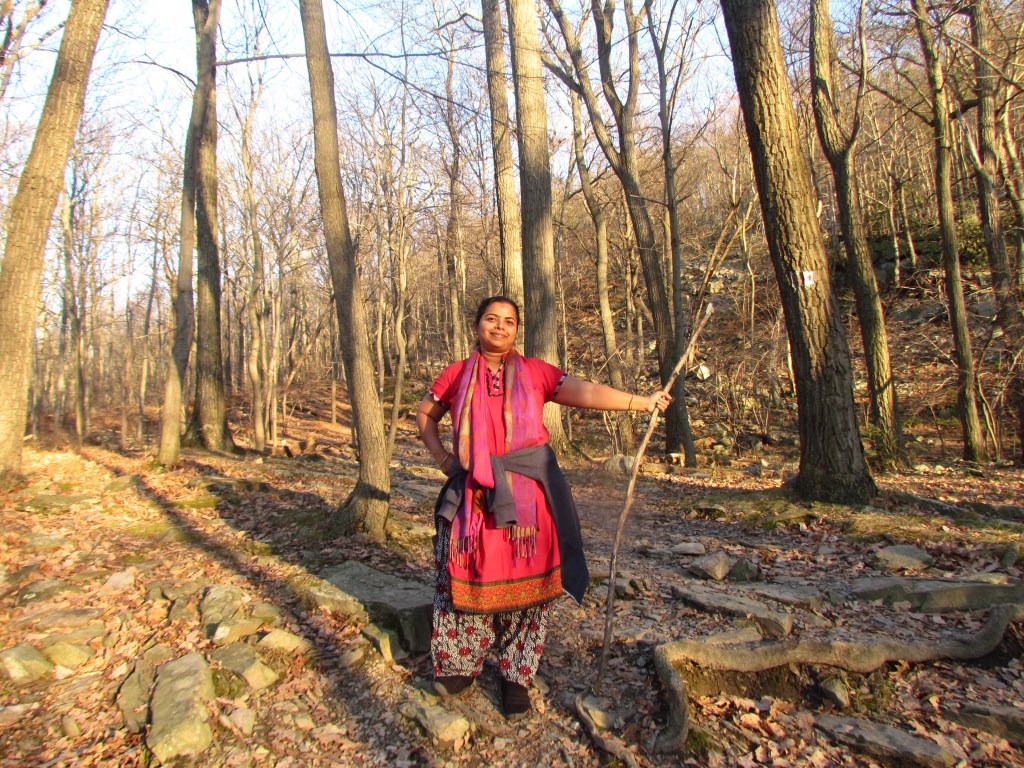


Mount Tammany Hiking Trail is in Hardwick New Jersey. It has both blue dot trails and red dot trails. Blue dot trail is the easier one and Red dot is the harder one and which is popular. We went in October and it was good. I guess its good in most of the seasons except in peak winters. Also it might get too hot in summers. Its always ideal to start early mornings if you are a beginner and hiking with kids. Because it will be difficult to get down once it gets dark. As you can see in the picture it has got dark by the time we reached down and having some snacks. Carry enough water and food with you in the car as you will not find any shops nearby. Also the rest rooms are of temporary kind not connected through the regular water supply so you can avoid it and use the nearest public restroom service by checking in google or GPS.
Also it might be a good idea to keep a rough map handy as these are in country side and signal might get lost.
The effort is worth it, you will get beautiful views and its very near to popular cities like Edison, East windsor etc so you should visit if you are living in NJ or Pennsylvania.
APC Review
Tours Tuesday – Chitradurga – City of Forts
What you should see in Chitradurga?

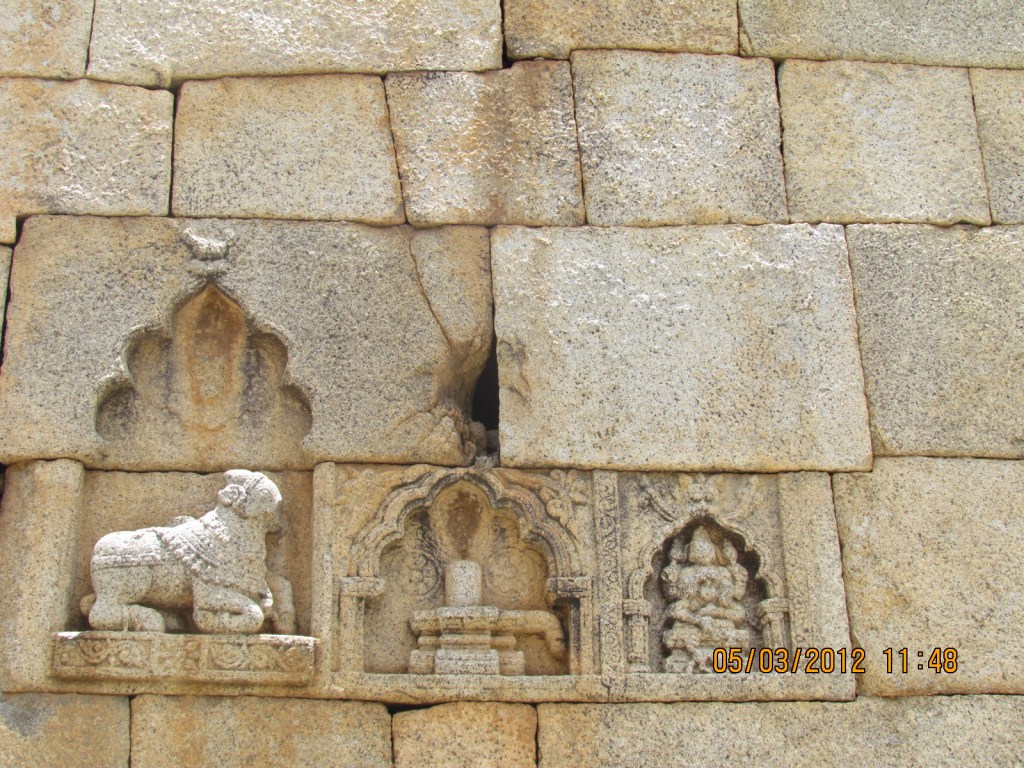

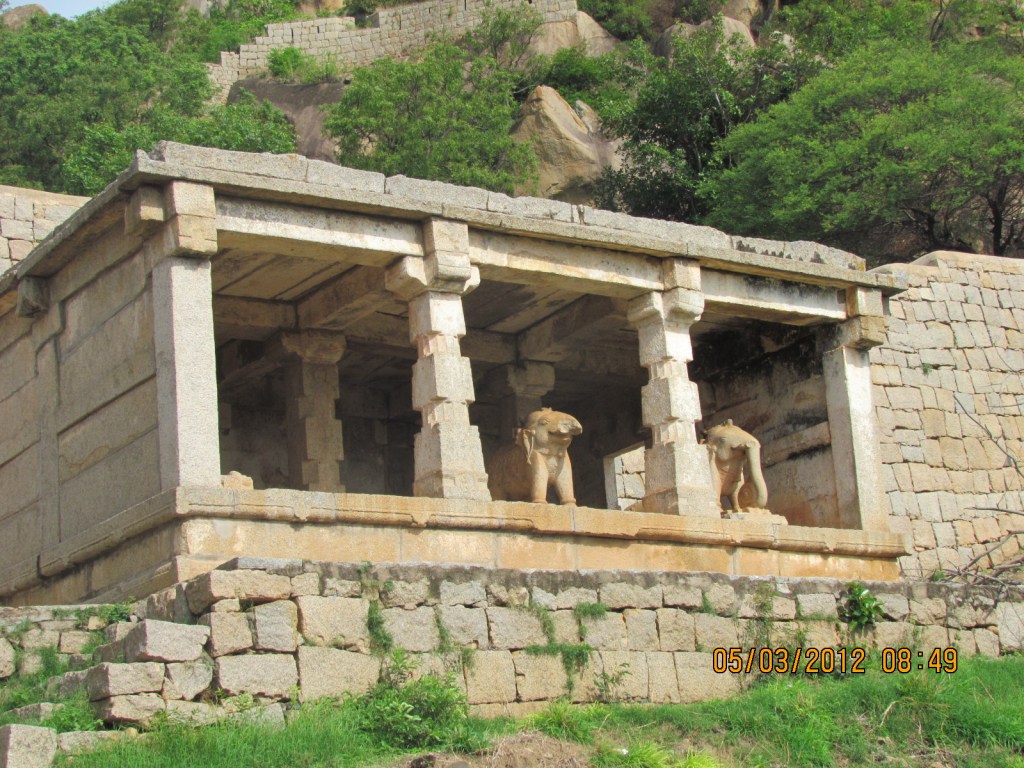
- Chitradurga Fort: This historic fort, built in the 17th century, is the most popular attraction in Chitradurga. The fort is known for its impressive architecture and engineering, and it is also associated with the legend of Onake Obavva.
- Chandravalli Cave Temple: This ancient cave temple, located about 3 km from Chitradurga, dates back to the 2nd century BC. The temple is known for its unique architecture and carvings.
- Vani Vilas Sagar Dam: This is a beautiful dam built on the Vedavathi River, about 30 km from Chitradurga. The dam is surrounded by scenic hills and offers boating and other water activities.
- Jogimatti Forest: This is a scenic forest area located about 20 km from Chitradurga. The forest is known for its wildlife, including leopards, bears, and various species of birds.
- Ankali Mutt: This is a popular pilgrimage site located about 25 km from Chitradurga. The mutt is known for its unique architecture and spiritual significance.
Chitradurga has been ruled by various dynasties and rulers throughout history. Some of the most notable rulers who have ruled Chitradurga include:
- Palegars of Chitradurga: The Palegars were the native rulers of Chitradurga who ruled the region from the 15th century until the 18th century. They were known for their bravery and military prowess and played a significant role in defending the region from the attacks of neighboring kingdoms.
- Hyder Ali and Tipu Sultan: The Mysore rulers, Hyder Ali and his son Tipu Sultan, conquered Chitradurga in the late 18th century. They were known for their military campaigns and strategic alliances with other kingdoms.
- Marathas: The Marathas also had a brief period of rule in Chitradurga during the 18th century. They established their presence in the region by forming alliances with the Palegars.
- British East India Company: The British East India Company took control of Chitradurga after defeating Tipu Sultan in the Fourth Anglo-Mysore War in 1799. The region became a part of British India and was administered by the Madras Presidency until India gained independence in 1947.
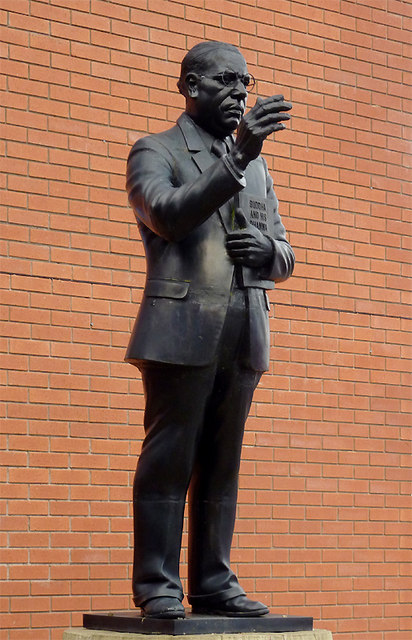
My dear girls, did you know this fact?
Babasaheb Ambedkar was a staunch advocate for women’s rights and worked throughout his life to promote gender equality and protect the rights of girls and women. He recognized that women in India faced multiple forms of oppression and discrimination, including patriarchal attitudes, social customs, and legal barriers.
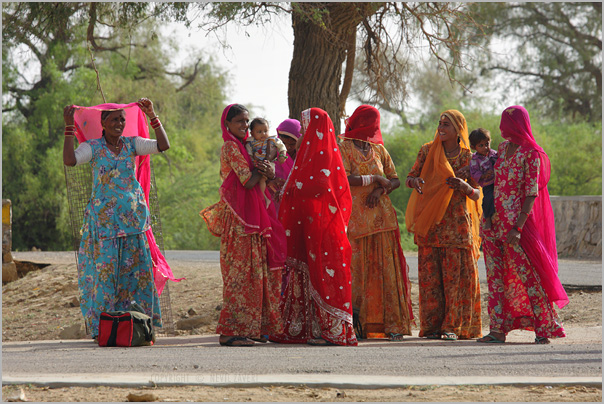
One of the most significant contributions that Ambedkar made towards protecting the rights of girls was through his work on the Hindu Code Bill. The bill was a comprehensive piece of legislation aimed at reforming Hindu personal law, which governed issues such as marriage, divorce, and inheritance. Ambedkar recognized that the existing laws discriminated against women, particularly in matters related to property rights and divorce.
He worked tirelessly to draft and pass the Hindu Code Bill, which included provisions for women’s rights such as the right to own property, the right to seek divorce on certain grounds, and the right to inheritance. The bill faced strong opposition from conservative Hindu groups, who argued that it went against traditional Hindu values and customs. However, Ambedkar persevered and ultimately succeeded in getting the bill passed in parliament in 1955.
In addition to his work on the Hindu Code Bill, Ambedkar was a vocal advocate for women’s education and empowerment. He believed that education was essential for girls to break free from the cycle of poverty and oppression, and he worked to establish schools and colleges for girls across the country. He also advocated for the provision of scholarships and other forms of financial assistance to make education accessible to all girls, regardless of their socio-economic background.
Overall, Ambedkar’s work on women’s rights was an important step towards promoting gender equality and protecting the rights of girls and women in India. His vision of a just and equal society included the full participation and empowerment of women, and his contributions towards achieving this goal continue to inspire us today.
References
- Chitnis, K. (1994). Ambedkar on Women’s Rights. Economic and Political Weekly, 29(52), WS5-WS9. Retrieved from https://www.jstor.org/stable/4401325
- Desai, N. (2016). Women’s Rights in India: An Overview. Social Action, 66(3), 209-225. Retrieved from https://www.jstor.org/stable/26409936
- Mathew, G. (2015). Dr. B. R. Ambedkar and Women’s Rights. International Journal of Social Science and Humanities Research, 3(4), 121-126. Retrieved from https://www.researchgate.net/publication/308057283_Dr_BR_Ambedkar_and_Women%27s_Rights
- National Commission for Women. (2016). Dr. B.R. Ambedkar: A Champion of Women’s Rights. Retrieved from http://ncw.nic.in/pdfReports/Dr_BR_Ambedkar_A_Champion_of_Womens_Rights.pdf
Basil 🌿 pesto sauce
Doing it again today without pine nuts.

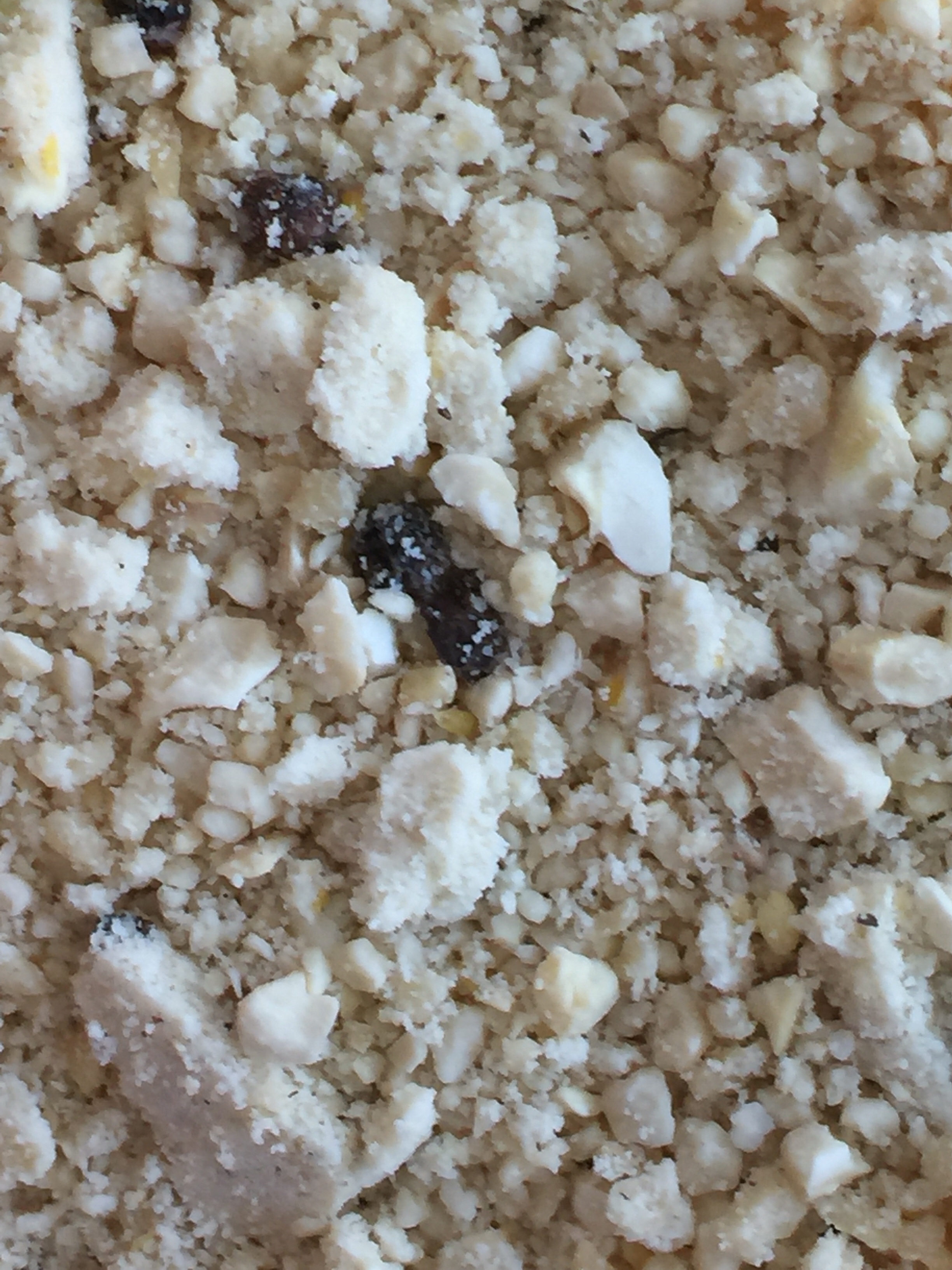

Few days back I found fresh basil and parsley leaves in a Indian grocery store. I was so tempted to buy it. So I bought it first and then started thinking where to use it. I knew I could put it in pasta. So I made pasta and added basil and parsley. But I still had more leaves and I would get bored if I cook pasta everyday. Of course my daughter loves my pasta and she won’t get bored of it even if I cook everyday.
Next thing I found was basil pesto sauce recipe by vahchef. First time I made without pine nuts and next time I got pine nuts and made with that. I was not really sure we would like it because we add parmesan cheese and none of us are really fans of parmesan cheese. But to our astonishment it came out so well and…
View original post 172 more words
Solimo Paper Wipes
Bought this from amazon. Its useful.


